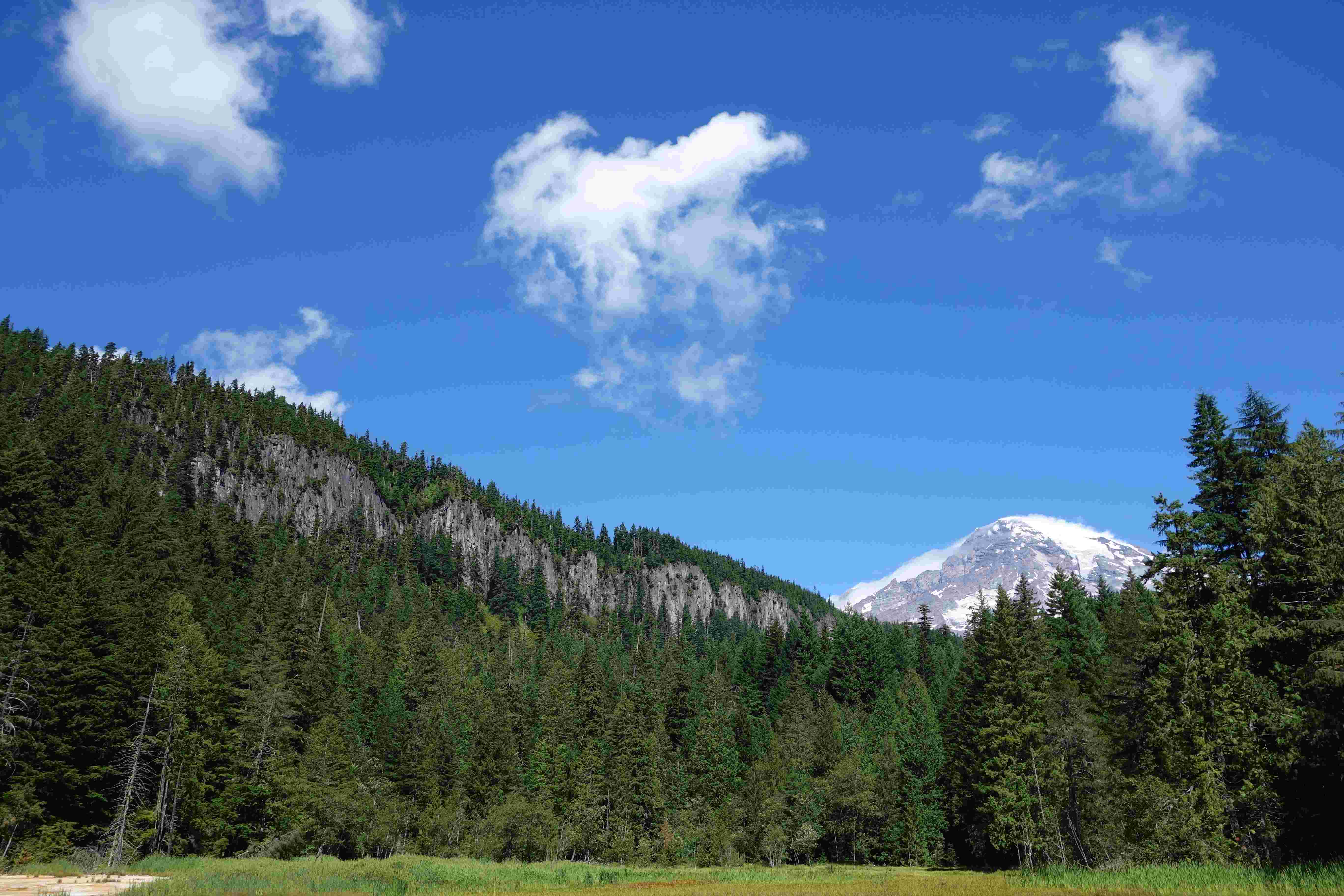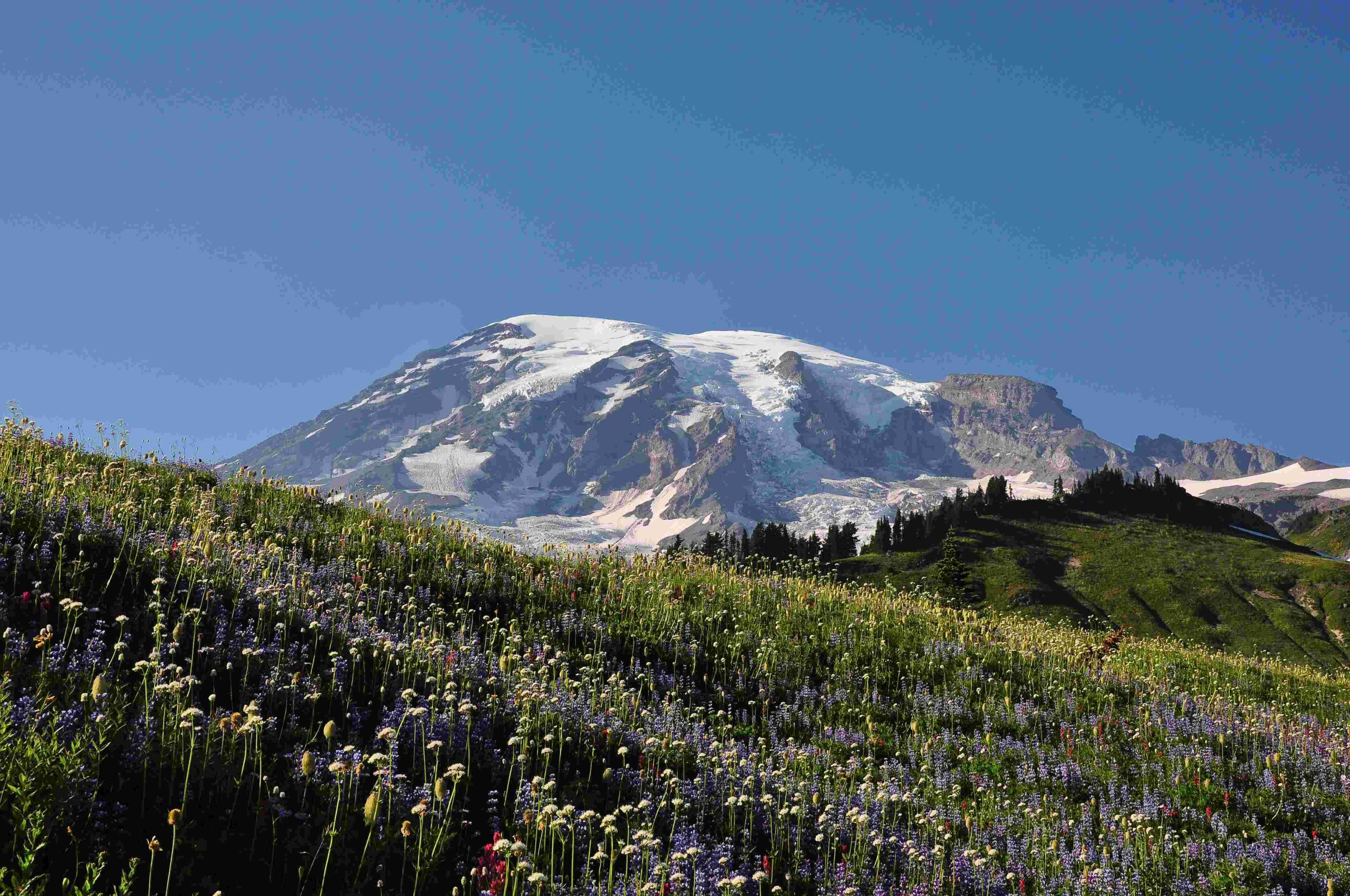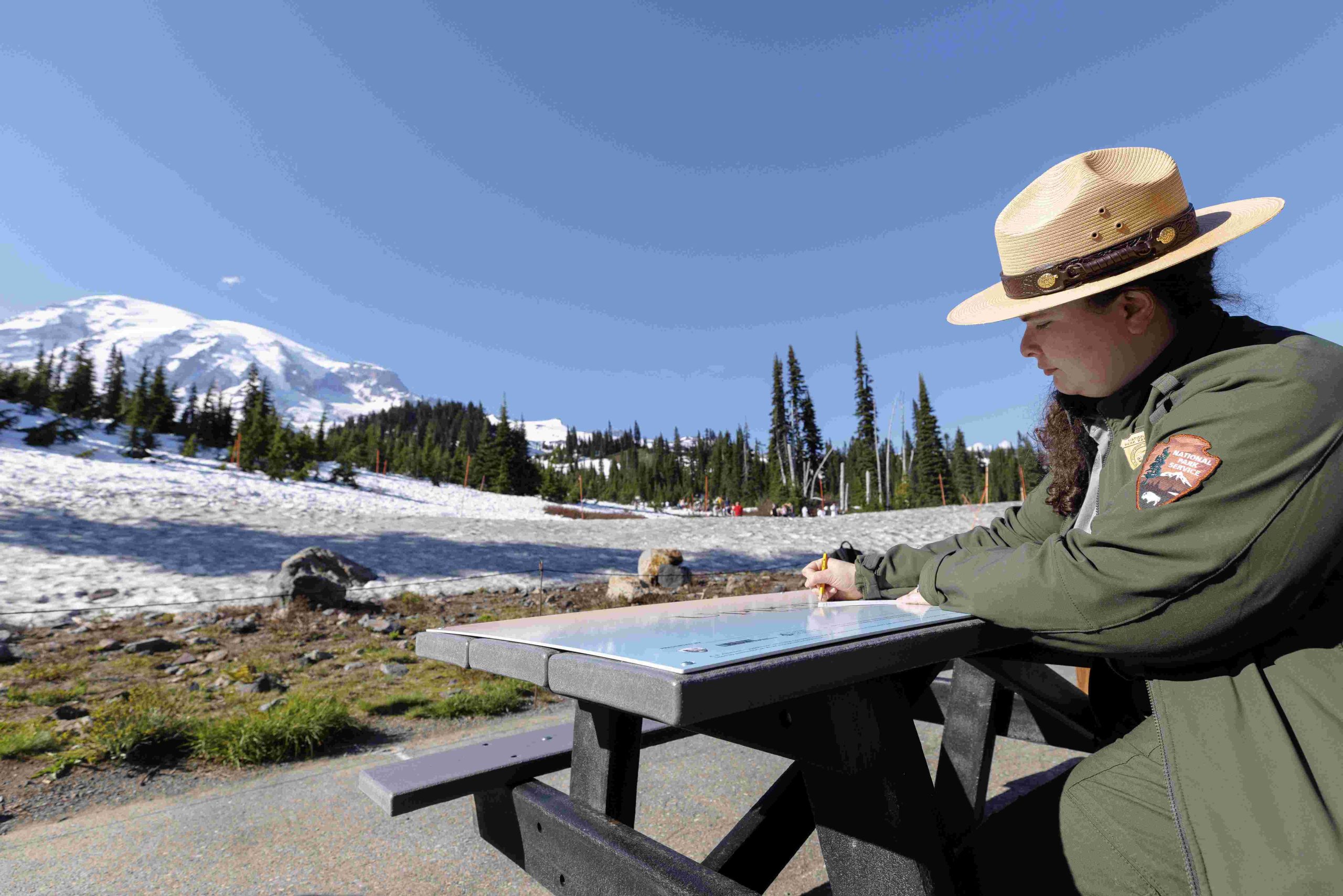Mount Rainier National Park, located in Washington state, is a 369 square mile natural wonder centered around the towering Mount Rainier. This stratovolcano, standing at 14,410 feet, is the highest peak in the Cascade Range. The park features the largest single-mountain glacier system in the contiguous United States, old-growth forests, subalpine meadows, and diverse wildlife. It offers numerous hiking trails, scenic viewpoints, and educational opportunities for visitors.
What Are the Key Features of Mount Rainier National Park?

Mount Rainier National Park is a treasure trove of natural wonders and geological marvels. Here are some of its key features:
- Mount Rainier: The centerpiece of the park, this active stratovolcano is the tallest mountain in the Cascade Range.
- Glacier System: The park boasts 25 named glaciers, including the Carbon and Emmons Glaciers.
- Old-Growth Forests: Nearly three-fifths of the park is covered in dense coniferous forests.
- Subalpine Meadows: These areas burst with colorful wildflowers during the warmer months.
- Rivers and Waterfalls: The park is home to several rivers and numerous waterfalls.
Geological Significance
Mount Rainier is a geologically young volcano, formed by successive lava flows over the past million years. Its last eruption occurred approximately 150 years ago, making it an area of ongoing geological interest and study.
Biodiversity
The park’s varied ecosystems support a rich diversity of flora and fauna:
- Mammals: 50 species, including black bears, Roosevelt elk, and mountain goats
- Birds: Over 220 species, from jays to woodpeckers
- Plants: Diverse plant life ranging from old-growth forest giants to delicate alpine wildflowers
What Are the Most Popular Hiking Trails in Mount Rainier National Park?

Mount Rainier National Park offers a variety of hiking trails suitable for different skill levels. Here are some of the most popular:
- Wonderland Trail
- Length: 93 miles
- Difficulty: Challenging
-
Highlights: Circumnavigates the mountain, passing through various life zones
-
Skyline Loop Trail
- Length: 5.5 miles
- Difficulty: Moderate to challenging
-
Highlights: Wildflowers, views of Mount Rainier and Nisqually Glacier
-
Naches Peak Loop Trail
- Length: 3.5 miles
- Difficulty: Moderate
-
Highlights: Wildflower meadows, huckleberries, mountain views
-
Tolmie Peak Lookout Trail
- Length: 9 miles
- Difficulty: Challenging
-
Highlights: Views of Winthrop Glacier and northeastern face of Mount Rainier
-
Short and Easy Trails
- Nisqually Vista Trail
- Narada Falls
- Myrtle Falls
These trails offer varying degrees of difficulty and showcase different aspects of the park’s beauty.
Where Are the Best Wildlife Viewing Opportunities in the Park?
Mount Rainier National Park provides excellent opportunities for wildlife observation. Here are some prime locations and tips:
- Oak Creek Feeding Stations: Best for viewing elk and mountain goats in winter
- Rocky Slopes: Ideal for spotting marmots
- Subalpine Meadows: Abundant wildlife during warmer months
- Early Morning and Late Afternoon: Generally the best times for wildlife viewing
Common Wildlife
| Type | Species |
|---|---|
| Mammals | Black bears, Roosevelt elk, black-tailed deer, mountain goats |
| Birds | Gray jays, Steller’s jays, Clark’s nutcrackers, hairy woodpeckers |
Remember to maintain a safe distance from wildlife and follow park guidelines for responsible viewing.
What Amenities and Facilities Are Available at the Mount Rainier Visitor Center?
The Mount Rainier Visitor Center offers a range of amenities and resources for park visitors:
- Educational Programs: Ranger-led activities and informational sessions
- Information Resources:
- Detailed maps and trail guides
- Wildlife and geology information
- Accommodation and dining details
- Operating Hours: Varies by season, with extended hours during summer months
- Locations: Multiple centers including Paradise, Sunrise, and Ohanapecosh
These centers serve as excellent starting points for exploring the park, offering valuable information and guidance to enhance your visit.
What Are the Top Scenic Viewpoints in Mount Rainier National Park?
Mount Rainier National Park offers numerous breathtaking vistas. Here are some of the top scenic viewpoints:
- Reflection Lakes: On calm days, these lakes offer a mirror-like reflection of Mount Rainier.
- Tipsoo Lake: Known for its wildflower displays and picturesque picnic area.
- Sunrise: The highest point accessible by car, offering panoramic views of the mountain and surrounding peaks.
- Paradise: Famous for its wildflower meadows and stunning views of Mount Rainier.
Each of these locations provides a unique perspective on the park’s beauty, from reflective lakes to sweeping mountain vistas.
Mount Rainier National Park is a testament to the raw beauty and power of nature. From its towering volcanic peak to its lush forests and meadows, the park offers a diverse range of experiences for visitors. Whether you’re an avid hiker, a wildlife enthusiast, or simply someone who appreciates natural beauty, Mount Rainier has something to offer. As you plan your visit, remember to check current conditions, follow park guidelines, and prepare for an unforgettable journey into one of America’s most stunning natural landscapes.

